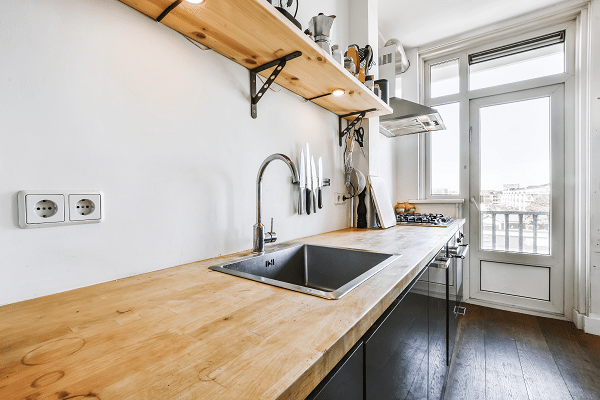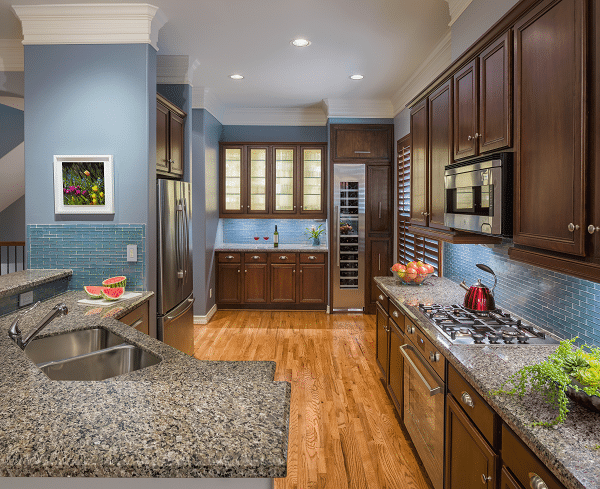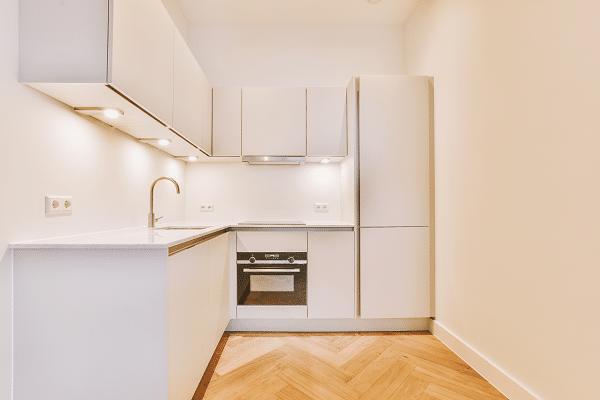Every home enthusiast knows that the kitchen serves as the heart of any dwelling. It’s where meals are prepared, conversations are had, and memories are made. Embarking on a kitchen remodeling project not only enhances the aesthetic appeal of your home but also boosts its value. However, this endeavor can be quite daunting, especially when doing it yourself. This blog post serves as a comprehensive guide with practical tips to navigate the exciting journey of DIY kitchen remodeling. With thoughtful planning and these actionable tips, your dream kitchen can be a reality.
Contents
Pick Your Appliances First

When embarking on a kitchen remodeling project, it’s crucial to choose appliances first. This strategy offers the benefit of ensuring that the design and layout of the kitchen will accommodate your chosen appliances. Selecting appliances first allows for custom cabinetry design and guarantees that all your necessary items will fit seamlessly into your new kitchen layout. It helps avoid any unexpected complications or adjustments later in the remodel, which can often lead to unnecessary expenses.
Choosing the right appliances is equally critical. You want to ensure they are efficient and functional, fitting the aesthetic of your desired kitchen design. Consider energy-saving appliances that provide excellent performance and are environmentally friendly. It’s advisable to factor in the long-term operational cost as well as the initial purchase cost. Furthermore, integrating appliances that match your lifestyle and cooking habits can transform your kitchen into a practical and personalized space.
Design Wide Walkways

In the hustle and bustle of kitchen activities, mobility should not be compromised. Thus, designing wide walkways is an important consideration in your remodeling project. A spacious pathway not only offers easy movement around the kitchen but also ensures safety. Having enough space reduces the chance of accidents caused by bumping into appliances or fixtures while carrying hot or sharp kitchen items.
Standard guidelines recommend at least 36 inches for a walkway, with a larger width for high-traffic areas or if the kitchen layout permits. But these are just guidelines – every kitchen is unique. The key is to maintain a balance between having a spacious kitchen where movement is unhindered and making optimal use of the available space. It might require a bit of creativity, but the outcome of a kitchen that is both beautiful and functional will be well worth it.
Opt For Quality Materials

The choice of materials greatly influences the durability and appearance of your kitchen. Prioritizing quality over cost can result in a longer-lasting kitchen, reducing the need for frequent replacements or repairs. High-quality materials can withstand the rigors of daily kitchen activities and maintain their luster for an extended period. Therefore, it’s essential to invest in good quality materials for countertops, cabinets, flooring, and other fixtures.
While considering the durability of materials, aesthetic value should also play a significant role. Granite countertops, hardwood floors, or high-quality laminate can be viable options, offering a blend of longevity and beauty. Each material comes with its pros and cons, and it’s important to research and consider these factors before making a choice. Aesthetically pleasing and durable materials can elevate the look of your kitchen, turning it into a space you’ll love to use every day.
Incorporate Kitchen Technology

Modern technology has significantly revolutionized kitchen design and functionality. Smart appliances and automated systems can improve efficiency, making cooking a less tedious and more enjoyable task. Therefore, incorporating kitchen technology in your remodel could be a game-changer. Touchless faucets, smart refrigerators, Wi-Fi-enabled ovens, or under-cabinet lighting are just a few examples of how you can blend technology with kitchen design.
While embracing technology, it’s vital to ensure that it complements your kitchen design and doesn’t overshadow it. The key is to integrate it seamlessly, enhancing the functionality without compromising the aesthetics of the kitchen. For instance, a smart refrigerator can double as a family organization center, displaying calendars, reminders, or even family photos. Similarly, under-cabinet lighting not only improves visibility but also adds ambiance to your kitchen space.
Use Your Counter Space Wisely

The counter is arguably the busiest area in the kitchen, used for a myriad of tasks from chopping vegetables to mixing ingredients. Therefore, maximizing this space is crucial. Clever storage solutions and strategic appliance placement can free up a lot of counter space, making it an organized and efficient workspace. For example, utilizing vertical space for storage or hanging pots and pans can leave more room for food preparation.
Moreover, it’s essential to design counter space near appliances for easy accessibility. Having adequate space next to your stove or oven allows you to place hot dishes without walking across the kitchen. Similarly, it’s beneficial to have counter space next to the refrigerator for convenience when putting away groceries or preparing meals. By using counter space wisely, you can enhance productivity and safety in your kitchen.
Lighting Is Key

Effective lighting is an often overlooked, yet crucial aspect of kitchen design. Not only does it contribute to creating a warm, inviting ambiance, but it also enhances the functionality of the space. To achieve the best results, it’s advisable to incorporate a combination of different light sources. Ambient lighting can provide general illumination, while task lighting can illuminate work areas such as the stove, sink, or counter spaces.
Designing the layout of lights needs strategic thinking. For instance, overhead lights are great for general illumination, but they can create shadows when you’re working on the countertop. To avoid this, consider under-cabinet lights for task lighting. Similarly, pendants or chandeliers can create visual interest while providing light over a kitchen island or dining area. It’s all about balancing aesthetics with practicality to create a well-lit, welcoming kitchen.
Don’t Neglect The Backsplash

A backsplash serves a dual purpose: protecting the walls from splatters and spills while adding a significant aesthetic element to the kitchen design. The choice of material and design for the backsplash can be an excellent opportunity to showcase creativity and add a personal touch to your kitchen. From ceramic tiles and stainless steel to stone or glass, there are countless options to choose from.
The key to selecting the right backsplash is to consider its coordination with other elements in the kitchen, such as the countertops, cabinets, and flooring. For instance, a colorful tile backsplash can add vibrancy to a neutral kitchen, whereas a stainless steel backsplash can offer a sleek, modern look. Regardless of the choice, a well-chosen backsplash can be the statement piece that brings your whole kitchen design together.
The Bottom Line
A successful DIY kitchen remodeling project relies on thoughtful planning and careful execution. Each step, from selecting appliances and designing walkways to choosing the right materials and incorporating technology, plays a significant role in creating a functional and aesthetically pleasing kitchen. Lighting and backsplash, while often overlooked, can significantly impact the final look of the remodel. With these tips in mind, turning your dream kitchen into a reality is an exciting and achievable venture. Be sure to keep a balance between creativity and practicality, and you’ll end up with a kitchen that truly feels like the heart of your home.



